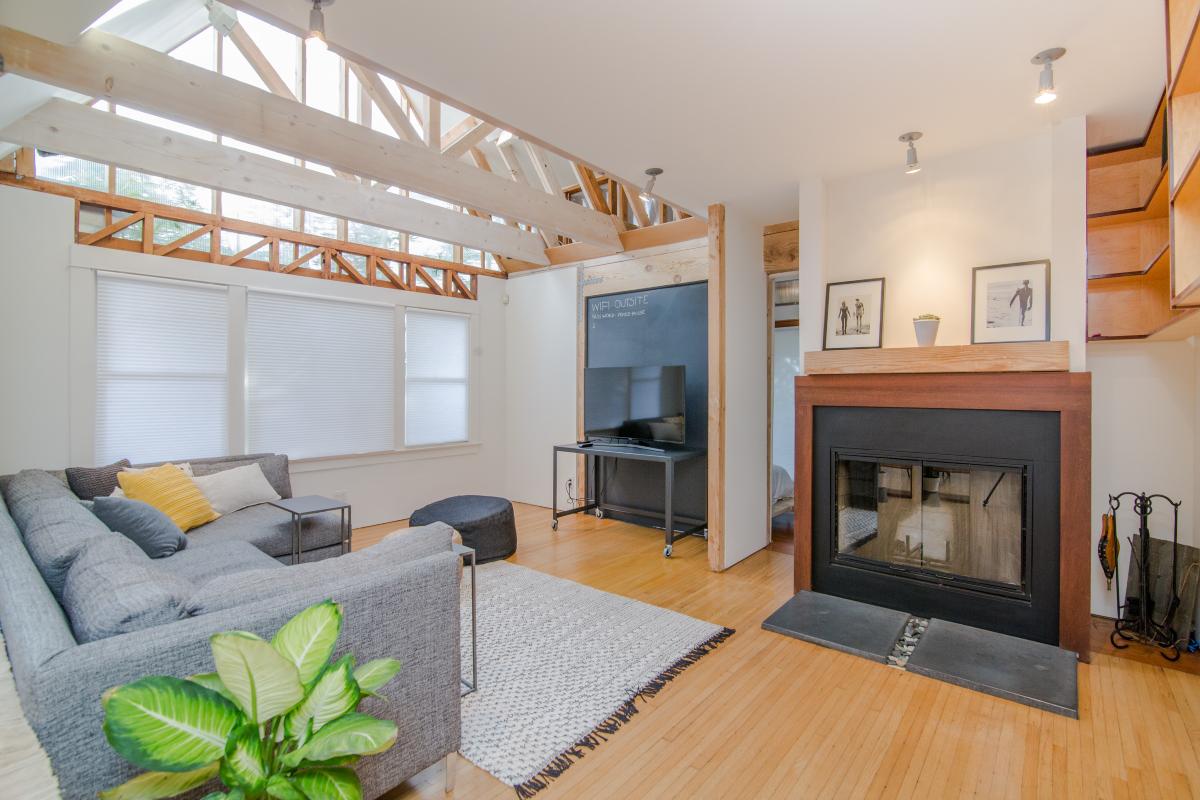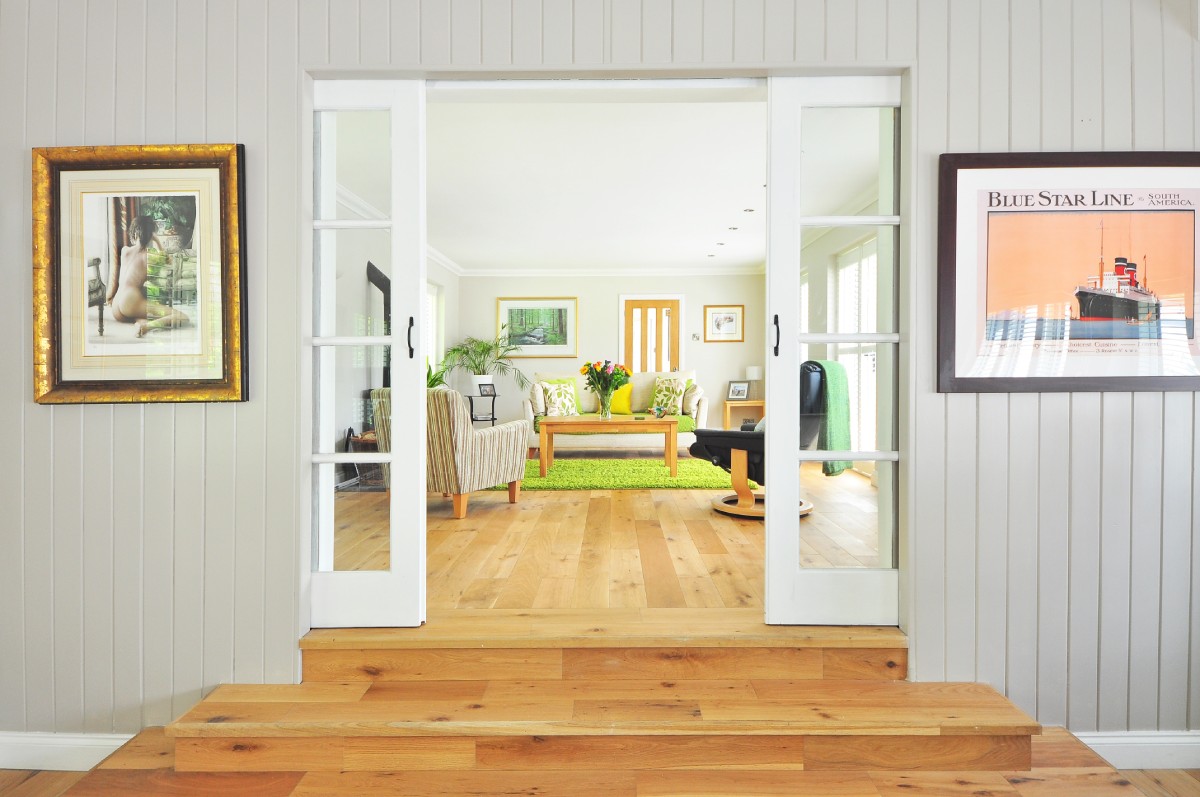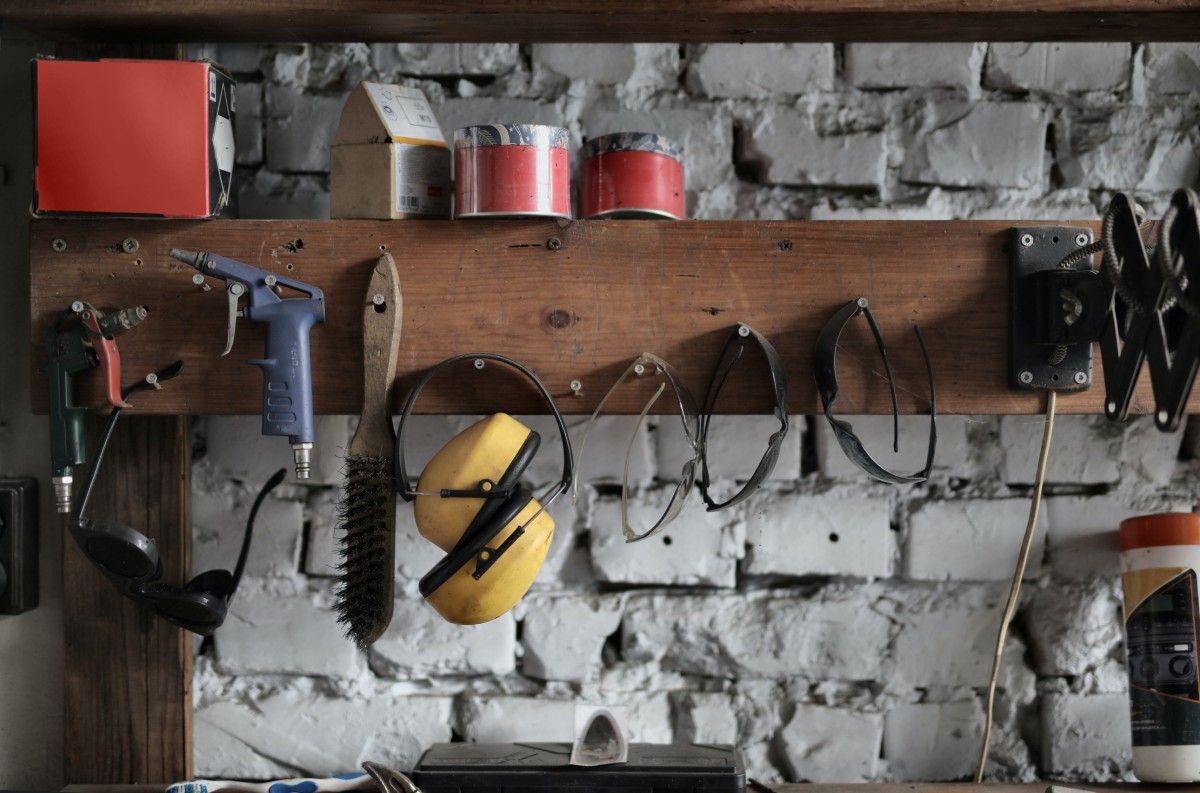Reducing energy consumption at home is not only a responsible choice but also a rewarding one. In today’s world, where environmental concerns and rising energy costs are at the forefront, taking steps to conserve energy is crucial. By making simple changes to our daily habits and adopting energy-efficient practices, we can contribute to a more sustainable future while also enjoying financial savings.
One of the primary reasons for reducing energy consumption is its significant impact on the environment. The burning of fossil fuels for electricity and heating purposes releases greenhouse gases into the atmosphere, contributing to climate change and air pollution. By minimizing our energy usage, we can help reduce the carbon footprint associated with our homes and lessen our ecological impact. It is an opportunity for us to play an active role in preserving the planet for future generations.
Moreover, embracing energy conservation practices offers numerous benefits for homeowners. One of the most apparent advantages is the potential for cost savings. By implementing energy-efficient measures, households can significantly reduce their utility bills. Imagine the impact of making small changes that lead to substantial long-term savings. With each kilowatt-hour of electricity saved, you are not only preserving resources but also adding to your financial well-being.
Beyond financial considerations, reducing energy consumption also enhances the comfort and quality of life within our homes. Energy-efficient practices often go hand in hand with improved insulation, better indoor air quality, and optimized heating and cooling systems. These measures can create a healthier living environment, free from drafts, excessive humidity, or temperature extremes.
In this blog post, we will explore ten easy and practical ways to reduce energy consumption at home. These methods require minimal effort but can make a significant impact. By incorporating these habits into our daily lives, we can contribute to a more sustainable future, save money on our energy bills, and create a comfortable living space that aligns with our values.
Remember, every small step matters. Let’s embark on this journey towards energy conservation together and discover how easy it can be to make a positive change within our own homes.
1. Switch to LED Light Bulbs
When it comes to reducing energy consumption at home, one of the easiest and most effective changes you can make is switching to LED light bulbs. LED, or Light Emitting Diode, bulbs offer a range of benefits that far surpass traditional incandescent bulbs, making them an excellent choice for energy-efficient lighting.
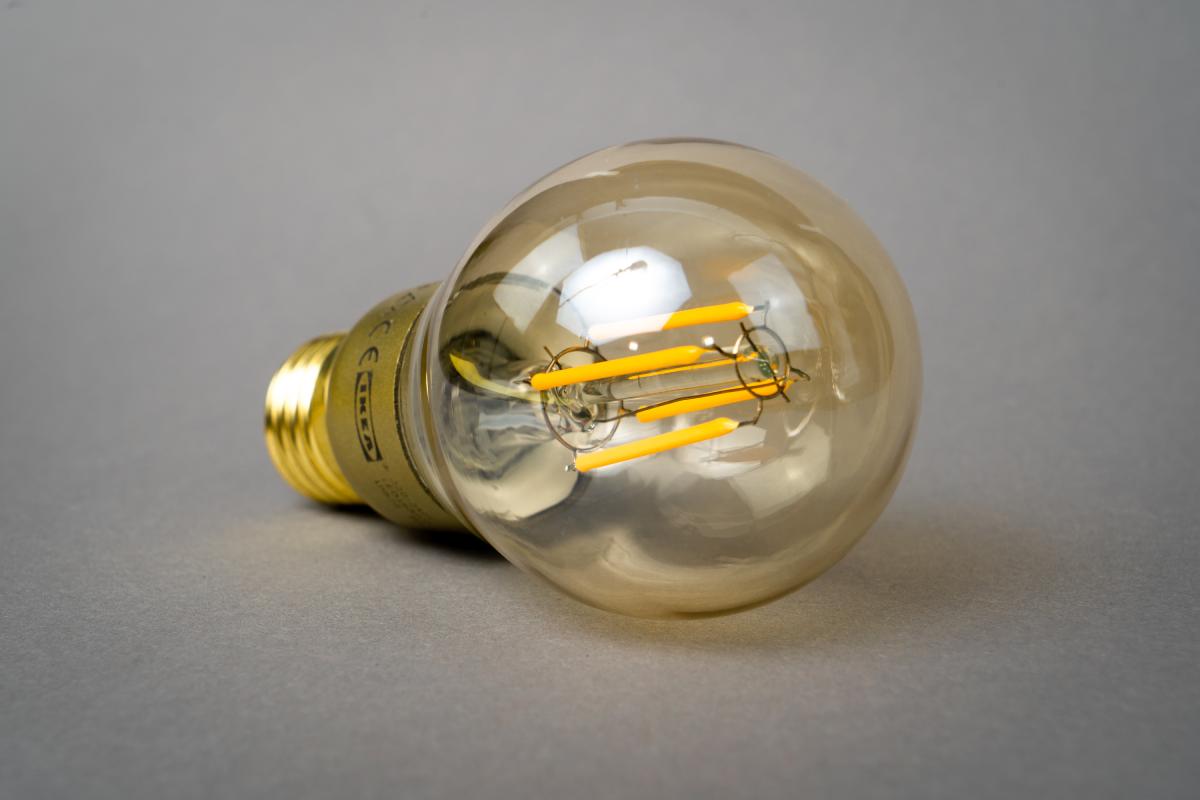
One of the primary advantages of LED bulbs is their energy-saving capabilities. Compared to incandescent bulbs, LED bulbs consume significantly less electricity while producing the same amount of light. In fact, LED bulbs can be up to 80% more efficient, meaning they convert a higher percentage of energy into light and waste less as heat. This increased efficiency translates directly into lower energy consumption and reduced electricity bills.
In addition to energy savings, LED bulbs have a much longer lifespan compared to traditional bulbs. While incandescent bulbs typically last around 1,000 hours, LED bulbs can last up to 50,000 hours or more. This longevity not only saves you money on replacement bulbs but also reduces the environmental impact of manufacturing and disposing of bulbs more frequently.
When choosing LED bulbs, there are a few factors to consider to ensure optimal energy efficiency. First, look for bulbs with the ENERGY STAR label, as they meet strict efficiency and quality standards set by the U.S. Environmental Protection Agency. Additionally, pay attention to the lumens, which indicate the brightness of the bulb, and select the appropriate level for each area of your home. Finally, consider the color temperature, as LED bulbs are available in a range of hues from warm to cool, allowing you to create the desired ambiance while maintaining energy efficiency.
To make the switch to LED bulbs, start by identifying the most frequently used light fixtures in your home and replace the bulbs in those areas first. Gradually replace the remaining bulbs over time. If you have any existing compact fluorescent bulbs, it’s worth noting that LEDs are even more efficient and have no issues with warm-up time or mercury content.
By switching to LED light bulbs, you can significantly reduce your energy consumption and contribute to a greener and more sustainable home. So go ahead and embrace this simple yet impactful change, and enjoy the benefits of energy-efficient lighting for years to come.
2. Unplug Electronics When Not in Use
In our modern homes, electronics and appliances have become an integral part of our daily lives. However, what many people don’t realize is that even when these devices are turned off or in standby mode, they continue to consume energy. This phenomenon, known as “vampire power” or “phantom load,” contributes to unnecessary energy wastage and can significantly impact your electricity bills. By adopting the simple habit of unplugging electronics when not in use, you can easily reduce your energy consumption and save money.
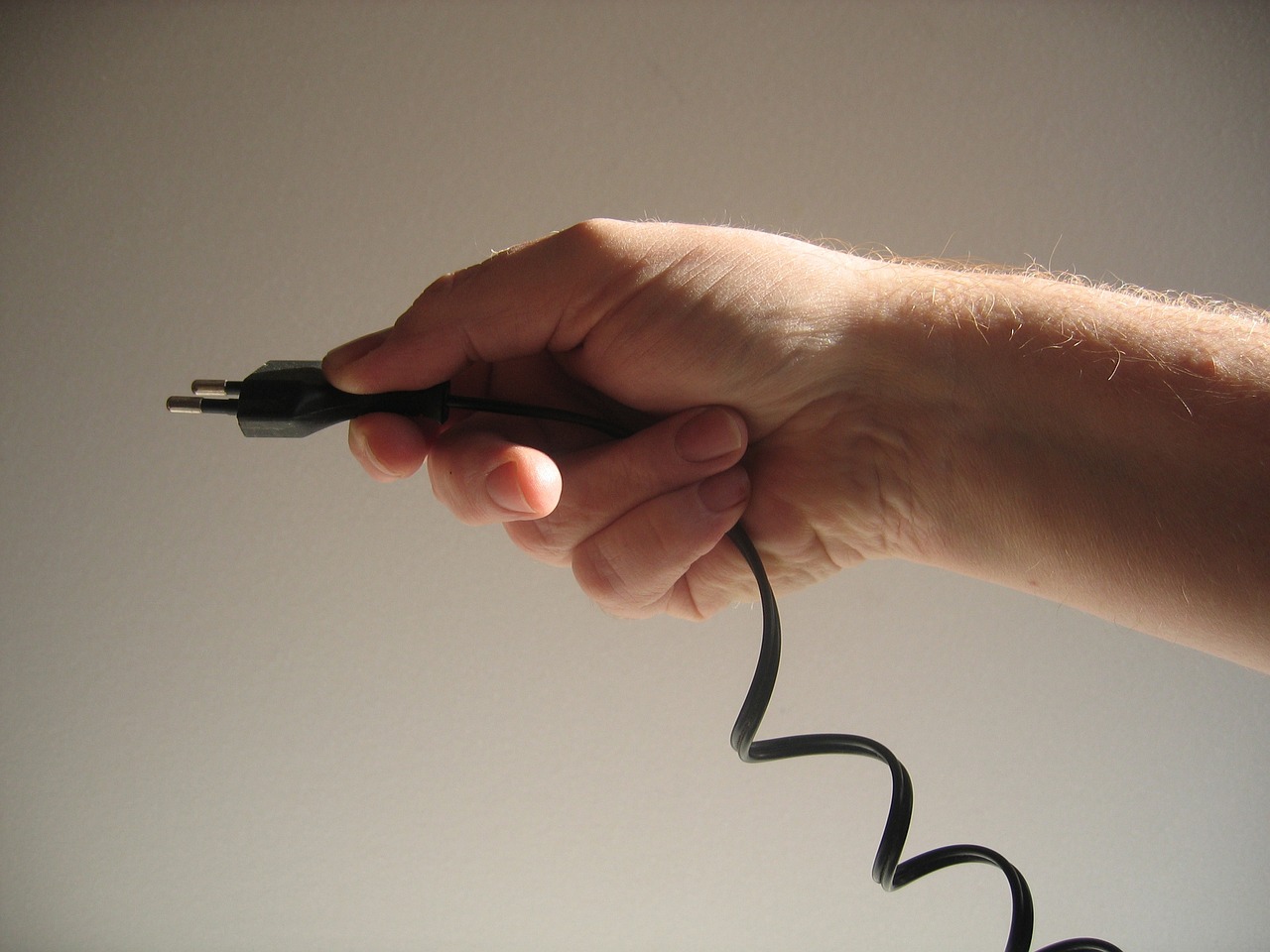
The concept of vampire power refers to the energy consumed by electronic devices that are plugged in but not actively being used. These devices remain in a standby state, waiting to be powered on instantly when needed. However, this standby mode requires a constant flow of electricity, resulting in energy being wasted unnecessarily. Studies have shown that vampire power can account for up to 10% of a household’s energy consumption, which adds up over time.
To combat vampire power and reduce energy wastage, it’s essential to unplug electronics when they are not in use. One of the easiest ways to do this is by directly unplugging the devices from the wall outlets. For instance, when you finish using your laptop or phone charger, unplug it from the wall socket to prevent it from drawing power when not in use. Similarly, if you have a television, gaming console, or audio equipment that is infrequently used, unplug them to eliminate any standby power consumption.
Another practical solution is to use power strips or surge protectors with an on/off switch. By plugging multiple devices into a single power strip and turning off the strip when the devices are not in use, you can effectively cut off power to all connected electronics at once. This approach is particularly useful for home entertainment systems, computer setups, or areas with numerous devices.
Remember to consider devices that require constant power, such as routers or modems, and consult their user manuals or manufacturer’s recommendations before unplugging them. Additionally, if you find it inconvenient to unplug certain devices regularly, consider using smart plugs or timers that allow you to schedule when electronics are powered on and off, minimizing their idle power consumption.
By practicing the habit of unplugging electronics when not in use or utilizing power strips with on/off switches, you can significantly reduce your energy consumption and contribute to a more sustainable home. So take a moment to assess your surroundings, identify electronics that can be unplugged, and start eliminating vampire power from your daily energy consumption.
3. Set Thermostat Temperature Wisely
Your thermostat plays a crucial role in controlling the temperature and comfort of your home. However, did you know that adjusting the thermostat settings can have a significant impact on your energy consumption? By setting your thermostat temperature wisely and utilizing programmable thermostats, you can reduce your energy usage and lower your heating and cooling costs.
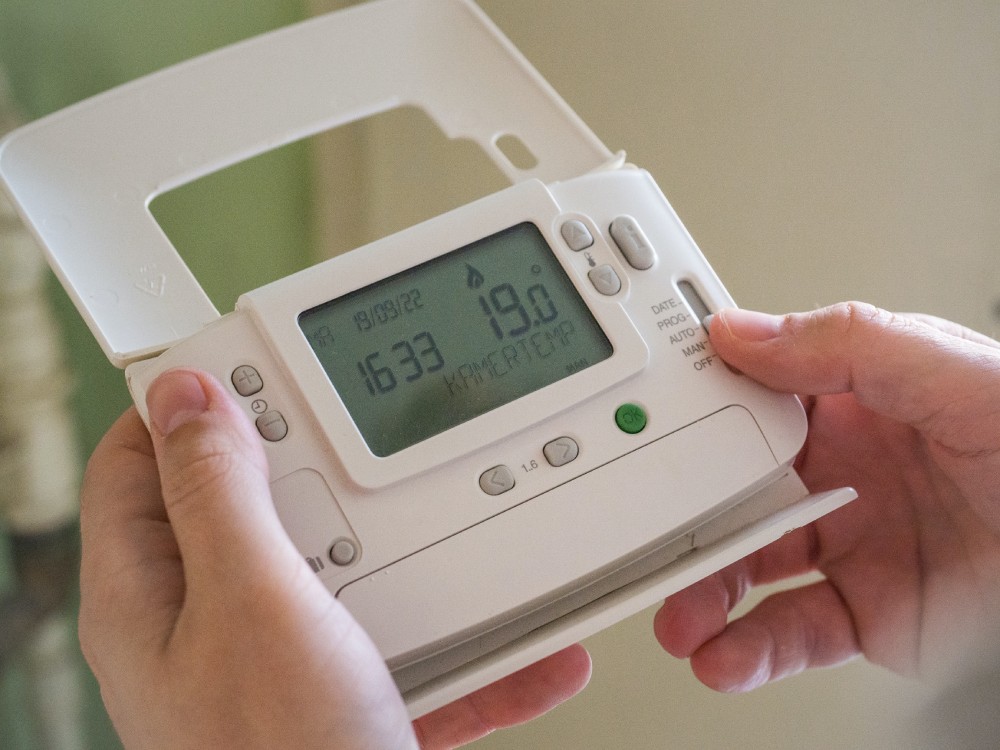
One of the simplest and most effective ways to save energy is by adjusting your thermostat temperature based on the season and your comfort preferences. During the colder months, consider lowering your thermostat by a few degrees to save energy. Wearing an extra layer of clothing or using cozy blankets can help compensate for the slightly cooler indoor temperature. Similarly, in warmer months, raise your thermostat temperature to minimize energy usage for cooling. Ceiling fans and natural ventilation can provide additional comfort without relying solely on air conditioning.
Utilizing a programmable thermostat takes energy savings to the next level. These devices allow you to set different temperature schedules throughout the day, automatically adjusting the temperature based on your daily routine. For example, you can program the thermostat to lower the temperature when you’re away at work or asleep, and raise it just before you return home or wake up. This way, you can enjoy comfortable temperatures when needed, while reducing energy consumption during periods of inactivity or absence.
Optimizing your thermostat temperature settings can lead to substantial energy savings. According to the U.S. Department of Energy, you can save up to 10% per year on heating and cooling costs by lowering your thermostat by 7-10 degrees Fahrenheit for 8 hours a day. Programmable thermostats can help automate this process, ensuring energy-efficient temperature control without the need for manual adjustments.
It’s important to find the right balance between energy savings and comfort. Experiment with different thermostat settings to identify what works best for you and your household. Keep in mind that every degree you adjust can make a difference in energy consumption and cost savings over time. Regularly review and update your thermostat settings to align with changing seasons, weather conditions, and your daily routine.
By setting your thermostat temperature wisely and utilizing programmable thermostats, you can achieve significant energy savings while maintaining comfort in your home. So take control of your thermostat and embark on the journey of energy-efficient temperature management.
4. Insulate Your Home
Proper insulation is a key factor in reducing energy loss and improving the overall energy efficiency and comfort of your home. By insulating your home effectively, you can minimize heat transfer, prevent drafts, and reduce the need for excessive heating or cooling. Let’s explore the benefits of insulation and some tips for insulating different areas of your home.
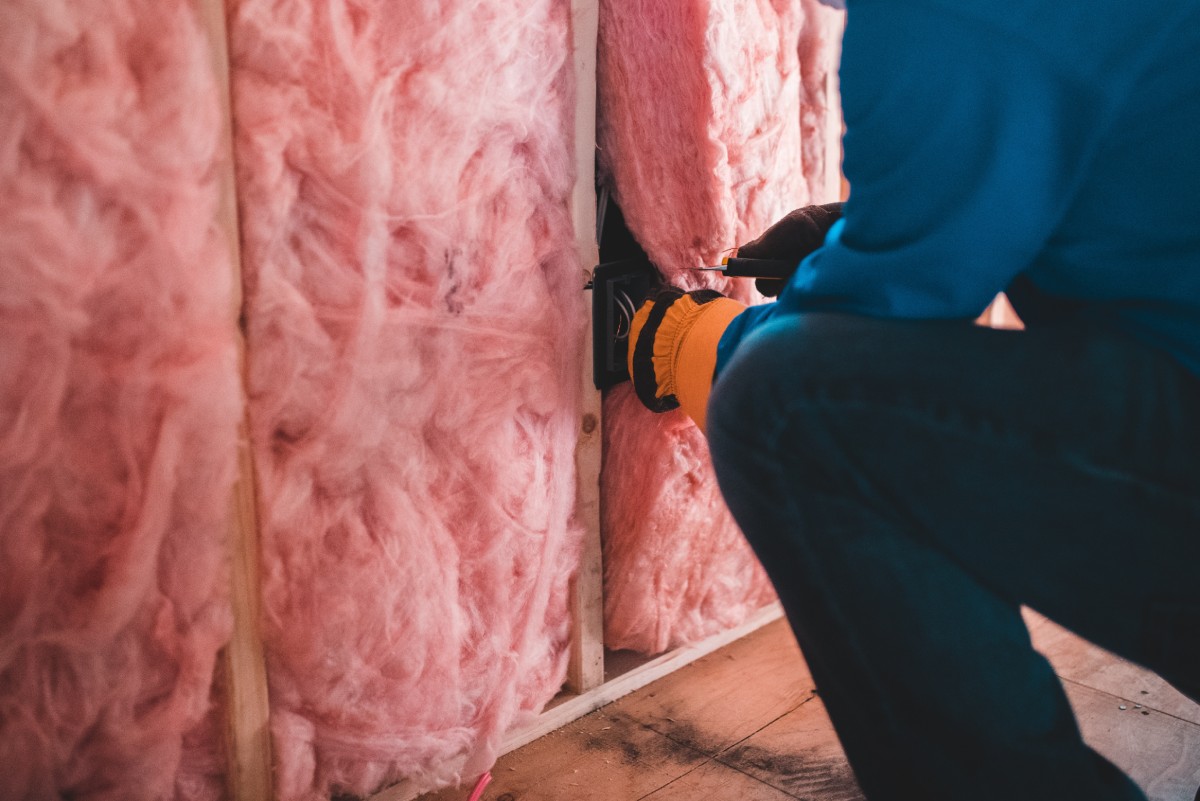
Insulation acts as a barrier, slowing down the flow of heat between the inside and outside of your home. During the colder months, insulation helps to keep the warmth inside, while in the warmer months, it helps to keep the heat out. By reducing heat transfer through walls, ceilings, and floors, insulation helps your heating and cooling systems work more efficiently, resulting in energy savings and lower utility bills.
When it comes to insulation, there are several areas in your home that can benefit from attention. Starting with walls, adding insulation between the interior and exterior walls can significantly improve energy efficiency. Insulation materials such as fiberglass batts, cellulose, or spray foam can be installed in wall cavities to provide thermal resistance. Insulating exterior walls can help maintain comfortable indoor temperatures and reduce energy loss.
Windows and doors are also common areas of energy loss. Installing weatherstripping or caulking around windows and doors can prevent drafts and improve insulation. Additionally, using window films, thermal curtains, or installing double-pane windows can further enhance energy efficiency by reducing heat transfer.
Don’t forget about your attic, as it is often a major source of heat loss or gain. Proper insulation in the attic can have a substantial impact on your overall energy consumption. Insulating the attic floor and sealing any gaps or cracks can help create a thermal barrier, preventing heat from escaping during winter and entering during summer.
When considering insulation, it’s important to choose the right type and R-value for your climate and specific needs. The R-value represents the material’s resistance to heat flow, with higher values indicating better insulation properties. Consult with insulation professionals or refer to local building codes to determine the recommended R-value for your area.
By insulating your home effectively, you can create a more energy-efficient and comfortable living environment while reducing your energy consumption and utility costs. Take the time to evaluate your insulation needs and explore the options available to you. Investing in insulation is an investment in the long-term energy efficiency and sustainability of your home.
5. Maximize Natural Lighting
Did you know that harnessing natural light in your home can not only brighten up your living spaces but also contribute to significant energy savings? By making the most of natural lighting during the day, you can reduce your reliance on artificial lighting and lower your energy consumption. Let’s explore the energy-saving advantages of utilizing natural light and discover some tips for maximizing its potential in your home.
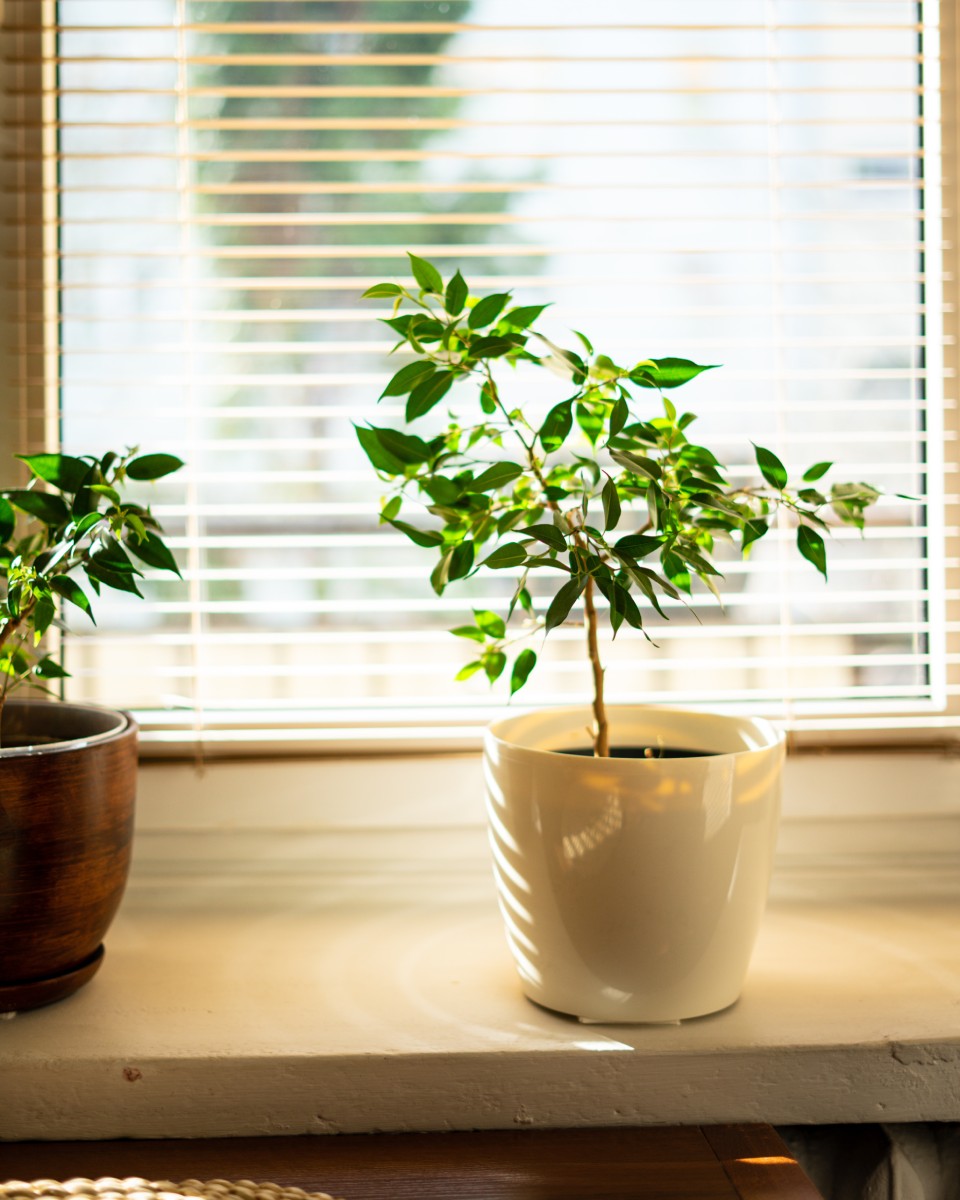
One of the key benefits of natural lighting is its ability to provide illumination without the need for electricity. By opening up curtains, blinds, or shades, you can allow sunlight to flood your rooms and create a warm, inviting atmosphere. Not only does natural light save energy, but it also enhances the aesthetics of your space, making it feel more spacious and vibrant.
To optimize natural light, consider the following suggestions. Firstly, choose window treatments that allow maximum sunlight penetration. Sheer curtains or blinds with adjustable slats can provide privacy while still allowing ample light to enter. Avoid heavy or dark-colored curtains that may block out natural light. Instead, opt for lighter colors or translucent materials that diffuse sunlight and distribute it evenly throughout the room.
Strategic placement of mirrors can also help amplify natural light. Positioning mirrors across from windows or near light sources reflects and spreads the light, creating a brighter and more expansive feeling. Mirrors can also bounce light into darker corners of a room, reducing the need for additional artificial lighting.
If feasible, installing skylights or light tubes can be an excellent way to bring more natural light into areas with limited access to windows. These features allow direct sunlight to enter your home, brightening up spaces like hallways, staircases, or interior rooms.
Remember to utilize natural light wisely by adjusting window coverings as needed. During hot summer days, use window treatments to block direct sunlight and prevent heat buildup, helping to maintain a comfortable indoor temperature.
By maximizing natural lighting in your home, you can reduce energy consumption and enjoy the many benefits it offers. Not only will you save on electricity costs, but you’ll also create a more pleasant and inviting living environment. So throw open those curtains, position some mirrors strategically, and let the natural light work its magic in your home.
6. Upgrade to Energy-Efficient Appliances
When it comes to reducing energy consumption at home, one of the most effective steps you can take is to upgrade to energy-efficient appliances. Household appliances such as refrigerators, dishwashers, washing machines, and air conditioners consume a significant amount of energy. By choosing energy-efficient models, you can decrease your energy usage, save money on utility bills, and contribute to a more sustainable future. Let’s explore the importance of energy efficiency ratings and discover how to choose the right appliances for your home.
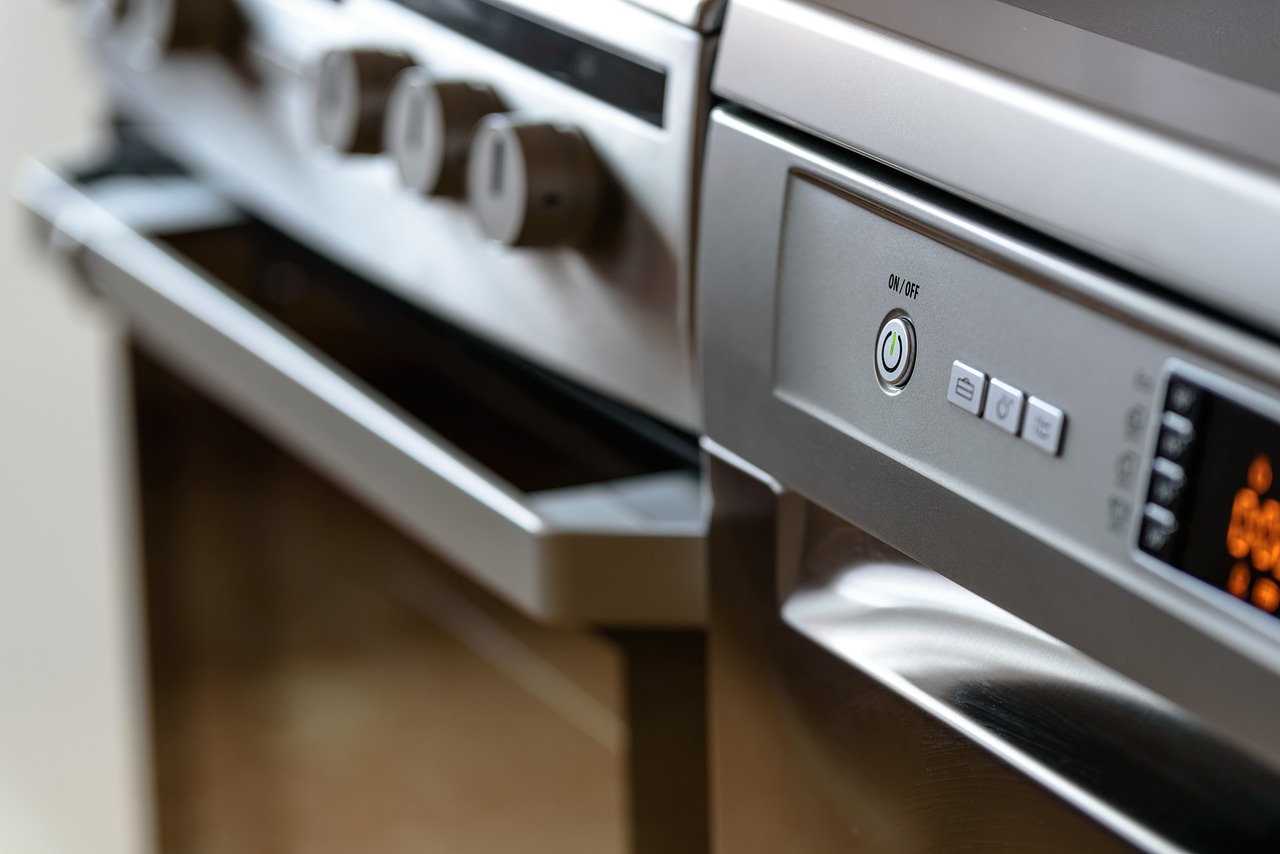
Energy efficiency ratings play a crucial role in identifying appliances that consume less energy while delivering the same or better performance. Look for appliances labeled with the Energy Star logo, which signifies that they meet or exceed stringent energy efficiency guidelines set by the Environmental Protection Agency (EPA) and the Department of Energy (DOE). Energy Star appliances are designed to operate using less electricity, ultimately reducing your energy consumption and environmental impact.
Upgrading to energy-efficient appliances offers numerous benefits. First and foremost, they consume less energy, which translates into cost savings on your utility bills over the lifespan of the appliance. Energy-efficient models often utilize advanced technologies, such as improved insulation, smart controls, or variable speed compressors, which optimize energy usage without compromising performance. Additionally, these appliances produce fewer greenhouse gas emissions, helping to combat climate change and preserve our planet’s resources.
When purchasing new appliances, it’s essential to consider their energy efficiency. Look for appliances with high Energy Star ratings, as they have undergone rigorous testing to ensure superior energy performance. Energy Star appliances typically display an estimated annual energy consumption, allowing you to compare and make informed decisions. Pay attention to features such as adjustable temperature settings, energy-saving modes, and water-saving options, which can further enhance energy efficiency.
In addition to choosing energy-efficient models, consider the size and capacity of the appliance to meet your household needs. Opting for smaller or appropriately sized appliances can prevent unnecessary energy waste. Proper maintenance and usage, such as regular cleaning, timely repairs, and following manufacturer guidelines, can also contribute to the longevity and energy efficiency of your appliances.
By upgrading to energy-efficient appliances, you not only reduce your energy consumption but also enjoy long-term cost savings and environmental benefits. Keep in mind that while the upfront cost may be slightly higher, the energy savings over time will offset the initial investment. So when the time comes to replace your old appliances, make energy efficiency a top priority for a greener and more energy-conscious home.
7. Reduce Water Heating Energy
Reducing energy consumption for water heating is not only good for your wallet but also beneficial for the environment. Water heating accounts for a significant portion of your home’s energy usage. By adopting some simple habits and making a few upgrades, you can conserve energy and lower your utility bills. Let’s explore practical ways to reduce water heating energy and maximize efficiency in your home.
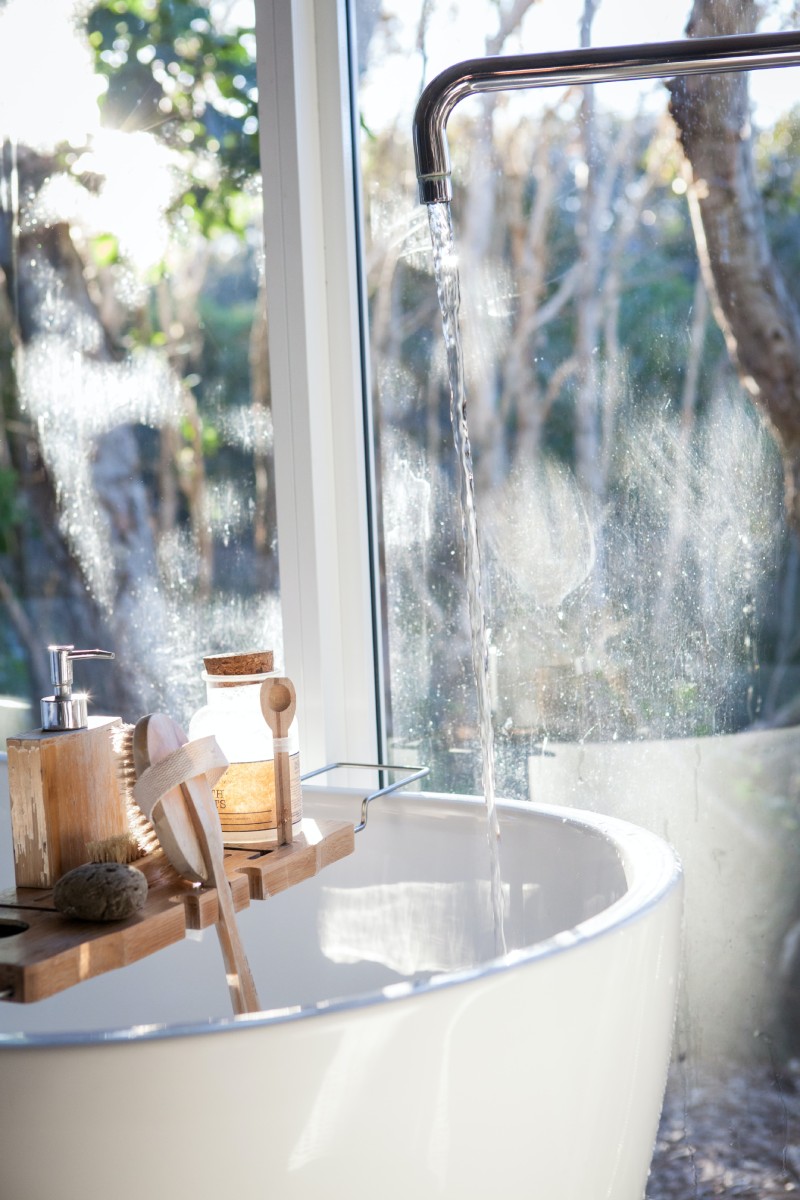
One of the easiest ways to conserve hot water is by practicing shorter showers. By reducing your shower time by just a few minutes, you can significantly reduce the amount of water and energy used. Consider using a shower timer or playing your favorite song as a reminder to keep showers more efficient.
Another effective method is to adjust the temperature on your water heater. Lowering the temperature by a few degrees can result in substantial energy savings over time. Most households find a temperature setting of around 120 degrees Fahrenheit (49 degrees Celsius) to be comfortable while still ensuring sufficient hot water.
When doing laundry, opt for cold water whenever possible. Many modern washing machines are designed to effectively clean clothes with cold water, and this eliminates the need to heat water for each load. Using cold water not only saves energy but also helps preserve the color and quality of your garments.
To improve the efficiency of your water heater, consider insulating the tank and pipes. Insulating the water heater reduces heat loss, allowing it to maintain water temperature more effectively. Additionally, insulating hot water pipes prevents heat loss during distribution, ensuring that hot water reaches the taps faster and with less wasted energy.
Upgrading to energy-efficient showerheads and faucets is another smart choice. These fixtures are designed to reduce water flow without sacrificing performance, which means less hot water is needed. Look for fixtures with the WaterSense label, as they meet the Environmental Protection Agency’s criteria for water efficiency.
Remember to repair any leaks promptly. A dripping faucet or a leaking pipe can waste a significant amount of hot water and increase energy consumption. Regularly check for leaks and fix them as soon as possible to prevent unnecessary energy loss.
By implementing these measures, you can make a noticeable impact on reducing water heating energy and decreasing your household’s energy consumption. These simple changes not only benefit the environment but also contribute to cost savings on your utility bills. So adopt these energy-saving practices and enjoy the rewards of an energy-efficient home.
8. Optimize Energy Usage in the Kitchen
The kitchen is a hub of activity in many homes, and it’s also an area where energy usage can add up quickly. By optimizing energy usage in the kitchen, you can reduce your energy consumption and contribute to a more sustainable lifestyle. Let’s explore some practical tips for energy-efficient cooking and using appliances wisely in the kitchen.
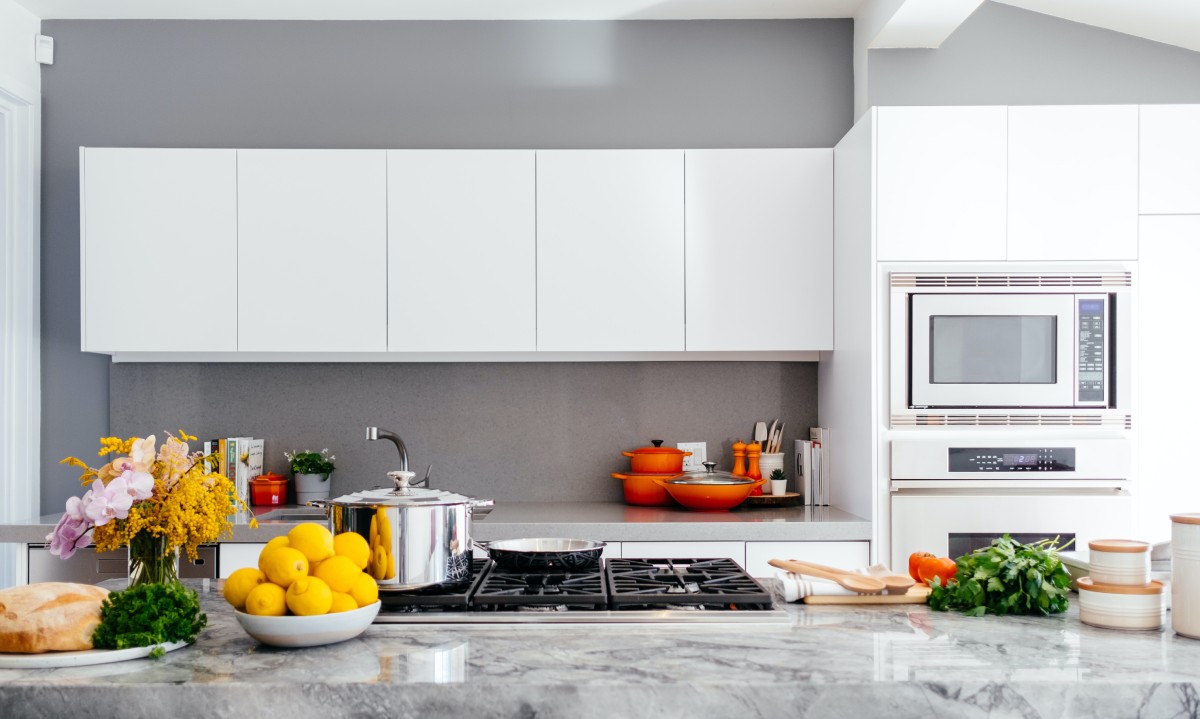
One of the key aspects of energy-efficient cooking is using the right-sized cookware and matching burner sizes. When cooking on a stovetop, ensure that the size of the pot or pan matches the size of the burner. Using a small pot on a large burner wastes energy as heat escapes around the sides. Conversely, using a large pot on a small burner can result in longer cooking times. By matching the cookware and burner sizes, you can maximize heat transfer and reduce energy waste.
Consider utilizing energy-saving settings on appliances such as dishwashers and refrigerators. Many modern appliances come with energy-efficient modes that allow you to reduce energy consumption without compromising performance. For example, dishwashers often have eco-friendly or energy-saving cycles that use less water and electricity. Similarly, refrigerators may offer power-saving or vacation modes to optimize energy usage when you’re away or when the fridge is not fully stocked.
Making smart choices when it comes to appliance usage can also contribute to energy savings. When using the oven, try to plan and cook multiple dishes at once to take advantage of residual heat. Avoid repeatedly opening the oven door, as this can cause significant heat loss. Instead, use the oven light and the window to monitor the cooking progress.
Take advantage of natural energy sources whenever possible. For example, when boiling water or heating small quantities of food, consider using an electric kettle instead of the stove. Electric kettles are generally more energy-efficient and heat water more quickly than stovetops.
Lastly, practice good habits like keeping the refrigerator and freezer doors closed as much as possible to maintain the cold temperature inside. Regularly defrosting the freezer can also improve energy efficiency by removing ice buildup, allowing the appliance to run more efficiently.
By implementing these energy-saving practices in the kitchen, you can significantly reduce your energy consumption and make a positive impact on the environment. Remember, small changes in daily habits can lead to significant energy savings over time. So let’s optimize our energy usage in the kitchen and enjoy a more sustainable and efficient cooking experience.
9. Harness the Power of Natural Ventilation
When it comes to reducing energy consumption and improving indoor air quality, harnessing the power of natural ventilation can be highly beneficial. Natural ventilation utilizes fresh outdoor air to cool and refresh your home, reducing the need for mechanical cooling systems. By opening windows strategically and utilizing cross-ventilation techniques, you can create a comfortable and energy-efficient living environment. Let’s explore the advantages of natural ventilation and discover how to make the most of it in your home.

One of the primary benefits of natural ventilation is its ability to cool your home without relying on air conditioning. Opening windows during cooler parts of the day, such as early morning or late evening, allows fresh air to enter and circulate, reducing the reliance on mechanical cooling systems. This not only saves energy but also provides a refreshing and more natural indoor environment.
Strategic window opening is key to maximizing the benefits of natural ventilation. In hot climates, it’s best to keep windows closed during the hottest part of the day to prevent hot air from entering. Instead, open windows on opposite sides of your home to create cross-ventilation. This allows air to flow through and cool the space effectively. You can also use window coverings such as blinds or curtains to control the amount of sunlight and heat entering your home.
Consider the layout of your home and the prevailing wind direction when opening windows for ventilation. Positioning windows on different sides of your home can help capture breezes and create a natural airflow. Additionally, installing window features such as adjustable louvers or vents can further enhance natural ventilation by directing airflow and allowing for precise control.
Keep in mind that natural ventilation is not limited to warmer months. Even during cooler seasons, opening windows for a short period can help refresh indoor air and improve air quality. It’s especially beneficial if your home has adequate insulation, as it retains warmth and prevents excessive heat loss.
While natural ventilation is a valuable energy-saving strategy, it’s important to balance it with energy efficiency. Ensure your home is properly insulated to prevent unnecessary heat gain or loss. Use weatherstripping and seal any gaps or cracks around windows and doors to maintain indoor temperatures and minimize energy waste.
By harnessing the power of natural ventilation, you can reduce your reliance on mechanical cooling systems, improve indoor air quality, and save energy. Embrace the freshness and natural breeze that nature provides and enjoy the benefits of a more comfortable and sustainable living space.
10. Educate and Involve the Whole Family
Reducing energy consumption is a collective effort that involves everyone in the household. By educating and involving the whole family, you can create a shared commitment to energy conservation and foster sustainable habits that will benefit both your home and the planet. Let’s explore the importance of collective effort and discover some ideas for involving family members in your energy-saving journey.

Emphasize the importance of energy conservation to your family members. Explain how reducing energy consumption not only helps save money but also contributes to a healthier environment. Encourage open discussions about the impact of energy use and the benefits of adopting sustainable habits. By raising awareness and understanding, you can inspire your family members to take an active role in reducing energy consumption.
Involve your family in setting energy-saving goals and creating a household action plan. This could include tasks such as turning off lights when leaving a room, unplugging electronics when not in use, or using energy-efficient appliances. Assign responsibilities to each family member and track progress together. Consider implementing a reward system or a fun challenge to motivate everyone and make energy conservation an engaging activity.
Encourage energy-saving habits by leading by example. Be mindful of your own energy use and practice what you preach. Show your family members how simple changes, like using natural light instead of artificial lighting or adjusting the thermostat, can make a difference. By consistently demonstrating energy-saving behaviors, you’ll inspire others to follow suit.
Educate your family about energy-efficient practices in specific areas of the house, such as the kitchen, bathroom, or laundry room. Teach them how to use appliances efficiently, reduce water consumption, and optimize heating and cooling settings. Encourage them to develop energy-conscious habits such as air-drying clothes, using cold water for laundry, and properly sealing windows and doors.
Make energy conservation a fun and interactive experience for the whole family. Organize energy-saving challenges, such as turning off all unnecessary lights for a day or finding creative ways to repurpose items instead of throwing them away. Engage in DIY projects that promote energy efficiency, such as making homemade natural cleaning products or crafting draft stoppers for doors and windows.
By involving the whole family in your energy-saving efforts, you create a supportive and sustainable environment where everyone plays a role. Encouraging sustainable habits from an early age instills a sense of responsibility and care for the planet. Together, you can make a significant impact on reducing energy consumption and leading a more sustainable lifestyle.
Conclusion
In this blog post, we have explored ten easy ways to reduce energy consumption at home. By implementing these simple yet effective strategies, you can make a significant impact on energy conservation, save money on utility bills, and contribute to a more sustainable future. Let’s recap the key points and reinforce the importance of taking individual actions for a greener and more energy-efficient home.

-
Switch to LED Light Bulbs: By replacing traditional incandescent bulbs with energy-efficient LED bulbs, you can significantly reduce energy consumption and enjoy long-lasting, cost-effective lighting solutions.
-
Unplug Electronics When Not in Use: Remember to unplug electronics or use power strips to cut off power to devices in standby mode, preventing unnecessary energy consumption.
-
Set Thermostat Temperature Wisely: Optimize your thermostat settings and consider using programmable thermostats to save energy and create a comfortable indoor environment.
-
Insulate Your Home: Proper insulation in walls, windows, doors, and attics helps minimize energy loss and improves overall comfort, reducing the need for excessive heating or cooling.
-
Maximize Natural Lighting: Take advantage of natural light during the day by optimizing window treatments, using mirrors strategically, and considering the installation of skylights.
-
Upgrade to Energy-Efficient Appliances: Consider replacing outdated appliances with energy-efficient models labeled with the Energy Star rating, reducing energy consumption and saving money in the long run.
-
Reduce Water Heating Energy: Conserve energy used for water heating by taking shorter showers, using cold water for laundry, and considering insulation for water heaters.
-
Optimize Energy Usage in the Kitchen: Practice energy-efficient cooking techniques and utilize energy-saving settings on kitchen appliances like dishwashers and refrigerators.
-
Harness the Power of Natural Ventilation: Open windows strategically and use cross-ventilation techniques to take advantage of natural airflow, reducing the need for mechanical cooling systems.
-
Educate and Involve the Whole Family: Encourage collective effort and involve your family members in energy-saving practices, fostering sustainable habits that benefit both your home and the planet.
Remember, even small actions can have a big impact. By implementing these energy-saving tips, you can make a positive difference in reducing energy consumption, lowering your carbon footprint, and promoting a sustainable future. Every individual action adds up to create significant change.
We encourage you to start implementing these strategies in your daily life and inspire others to do the same. Together, we can create a greener, more energy-efficient world for generations to come. Let’s take the first step towards a sustainable future, one energy-saving choice at a time.

